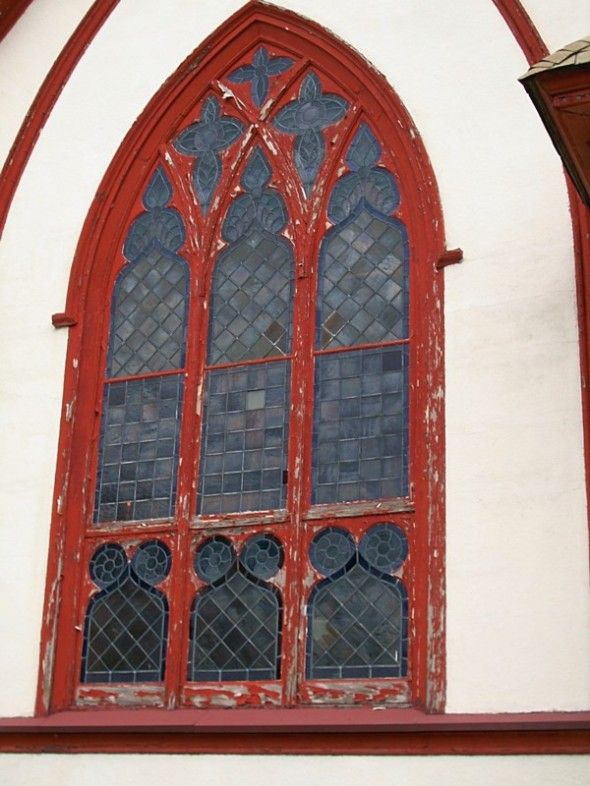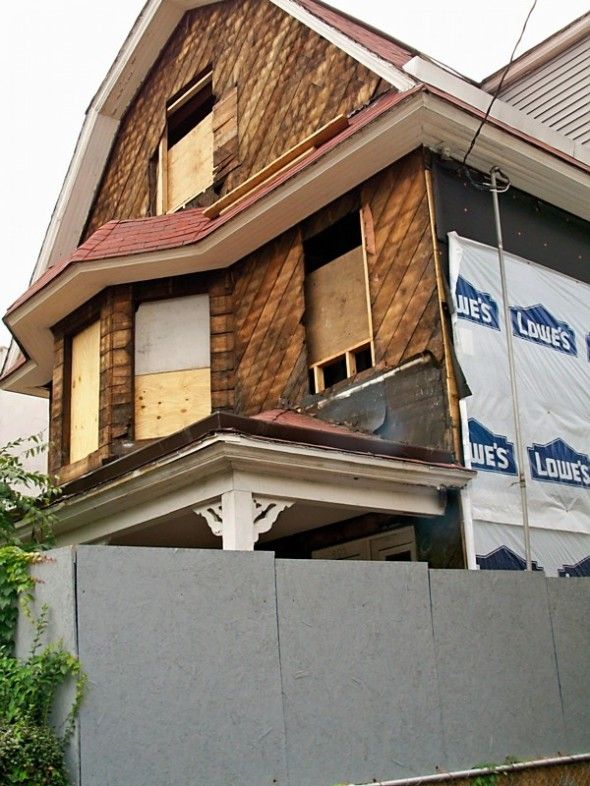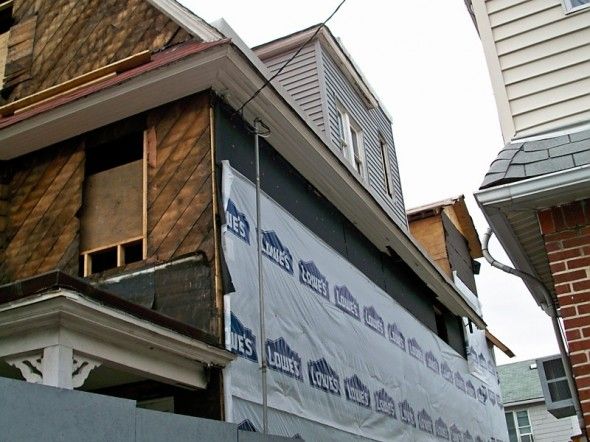Sheepshead Bay Architecture: Ornaments

Anyone who has ever had a Christmas tree knows that without decorations, all you’ve got is a chopped down pine tree in your living room. Tinsel and lights may add something but ornaments are what really brings cheer and raises everyone’s holiday spirit.
Architecture of the Victorian era was no different. Ornaments added a twist to otherwise utilitarian components of a building’s construction. Say you wanted to cover up a roof line or gutter with a cornice or bargeboard or use a corbel to hold up those structures – without ornamentation all you’ve got is a rather dull, plain, boxy piece of wood, metal or stone.
I recently checked out a few of the older homes and houses of worship in and around Sheepshead Bay. As I took photographs, one common theme that seemed to run through these venerable old buildings – and likewise separated them from their plainer, more modern neighbors – was the fine architectural details used to decorate them.
The first and most plentiful example of these energizing embellishments I saw on my trip to the Bay was the Sheepshead Bay United Methodist Church (3087 Ocean Avenue), which has stood at the corner of Ocean Avenue and Voorhies Avenue since 1884.

The church, which is built in the Gothic Revival style, also has a major Eastlake influence. The big giveaway that the church is built in the Gothic style is its lancet-arched windows and doors. Its Eastlake influence can be seen in the elaborate bargeboards hanging down from its roof eaves and gables – complete with pendants dropping down to decorate the empty air below.

The church’s lancet windows are embellished with tracery designs to further add to the overall fancy effect. Its doors are also topped with beautifully designed stained glass and tracery.

I also observed some simple but beautiful early 20th Century Colonial Revival homes, most with a Greek Revival influence, on East 18th Street between Voorhies Avenue and Jerome Avenue. One sits next to a sleek modern house – showcasing the stark differences between its own understated elegance and the simple shapes and more ambitious scale of newer styles.
Avenue S between Coney Island Avenue and East 9th Street, not far from the stucco and terra cotta Mediterranean Revival houses of Gravesend, is also home to an increasingly rare blast from the past.

A rather simple, symmetrical, gambrel-roofed Colonial Revival from the late Victorian era sits among simpler brick boxes from the 1930’s and more recent tricked out tear downs and gut renovations.
The major difference between this house and its more modern neighbors are its proportions and ornamentation. While it undergoes construction work, you can still clearly see adorable spandrels spanning the corners between the porch columns and roof eaves.
I have to say I had been admiring this endangered angel for a while and was worried when I first saw permits and a wooden construction fence being placed around its perimeter. I breathed a sigh of relief when I saw new insulation being put up instead of a demolition team bringing its walls down.
Let’s hope it gets a new lease on life with some modern upgrades and tasteful new siding that doesn’t interfere with its historic character.
What we do know is that at least some of the soul of 100 + year old homes are a result of moderately scaled architecture, complete with embellishments known as ornamentation.
Joe Teutonico is the lead blogger for Bensonhurst Bean




